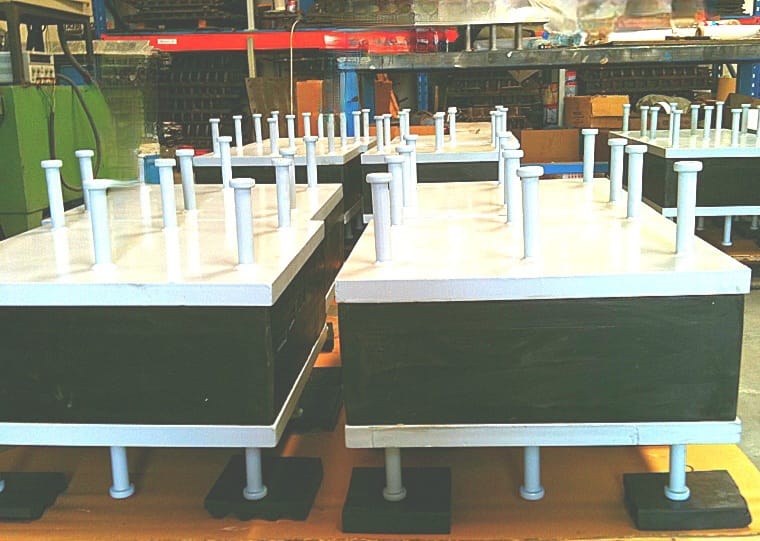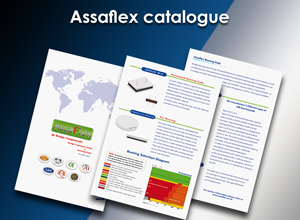LAMINATED ELASTOMERIC BEARINGS
Neoprene Bearing Pads provide a uniform transfer of load from beam to substructure. They permit beam rotation at the bearing point due to deflection or misalignment. They absorb vibration and prevent sound transfer, while reducing the destructive action of vibration between movable and stationary structural members. They also provide for movement caused by normal expansion and contraction and concrete creep effects & shrinkage. Neoprene Bearing Pads are used extensively in bridge structures.
Natural rubber (with the appropriate formulation) provides good resistance to traction, excellent failure strain and performs well with dynamic loads and in the cold, although it does tend to crystallize. On the other hand, it is highly gas permeable, its resistance to oils and solvents is quite poor and its susceptibility to aging must be compensated by the use of antioxidant and anti-ozone6, where by polychloroprene which, among other qualities, provides excellent resistance to aging, a very low load-bearing creep rate and good tear resistance. This makes it perfectly suitable for the requirements of bearings.
The characteristics of internal plates
The thickness of the plates must equal or be above 2 mm. S235 steel must be used or steel with an equivalent failure strain.

The characteristics of external plates
For type C bearings, the thickness of the external plates is 15mm for elastomeric laminations with a thickness of 8 mm and under, and 18 mm for thicknesses above. S235 steel or an equivalent is also used.
The characteristics of slide plates
The characteristics of sliding planes as in EN 1337-2, Sliding systems generally consist of a stainless steel plate lying on a side of the bearing on which a poly tetra fluoro ethylene
(PTFE) sheet is bonded these are type D and E bearings.
Types:
AType A: Single reinforcement Bearing (Not used in civil Engineering structure)
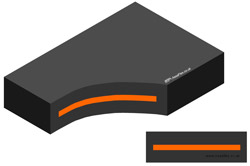
Type B: The definition for type B according to EN 1337-3 is; this type has (n+1), reinforcement / metal and (n)elastomeric of constant thickness with perimeter at least 4 millimetres thick and the upper and lower faces with a nominal 2.5mm thickness of elastomeric. The tolerance is (-0 and +2)

Other Type B: By definition these are different in that the upper and lower elastomeric coatings are thicker. This type of bearing is no longer straightforward reinforcement protected by elastomeric, but designed on the basis of required ability such as Elastomeric a Half Lamination or Passive Coating types.
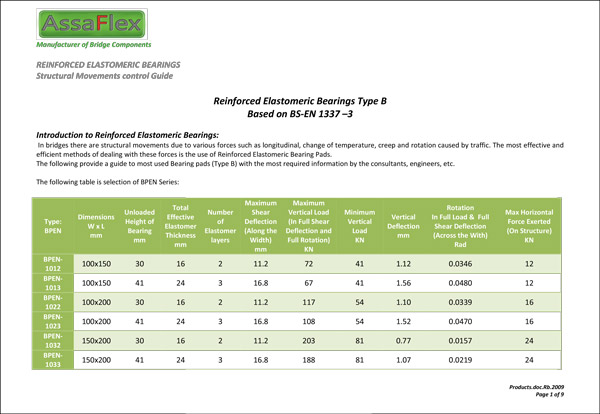
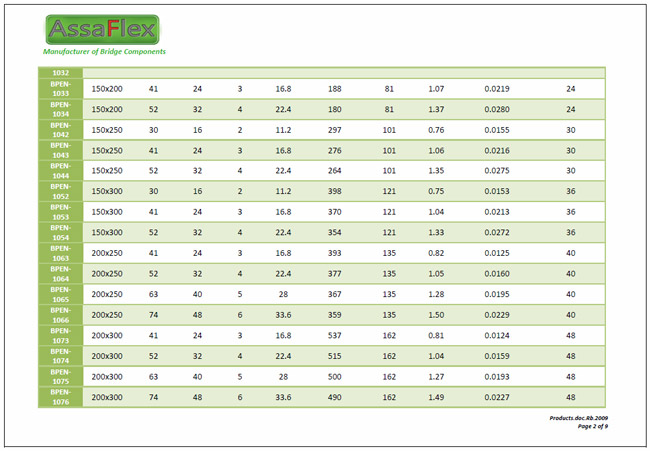
Circular Type
Circular shape with similar characteristic elastomeric bearings
- Circular Type with outer fixing steel plate
Two external steel plates can be vulcanised directly onto elastomeric bearings with simple reinforcement during production, so securing the bearings to the structure with mechanical fastenings and reducing the risk of slippage.
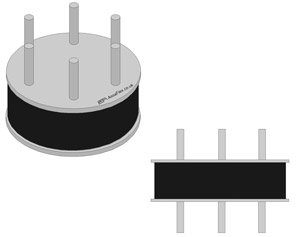
Type C Bearing Pad
